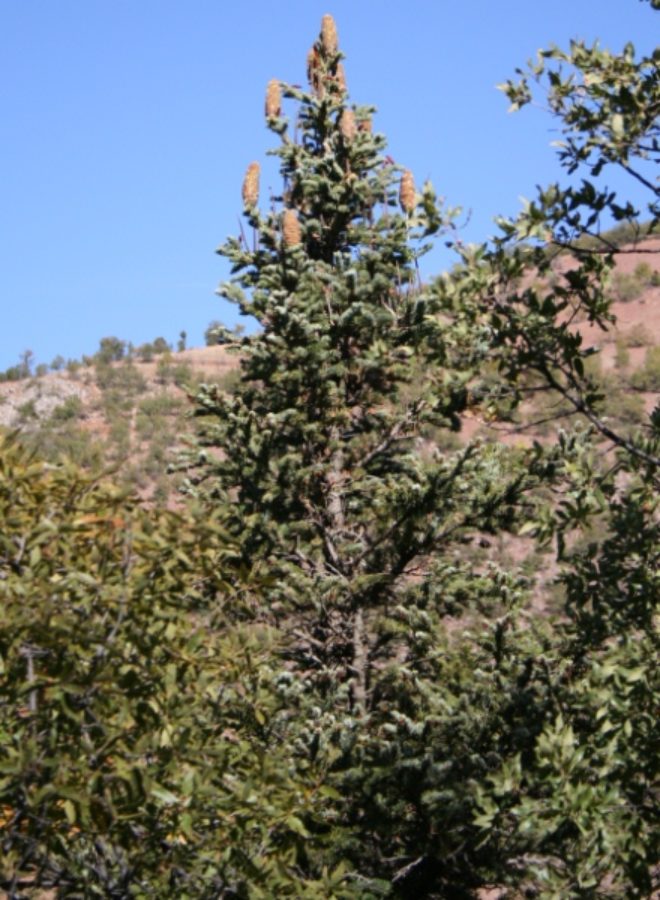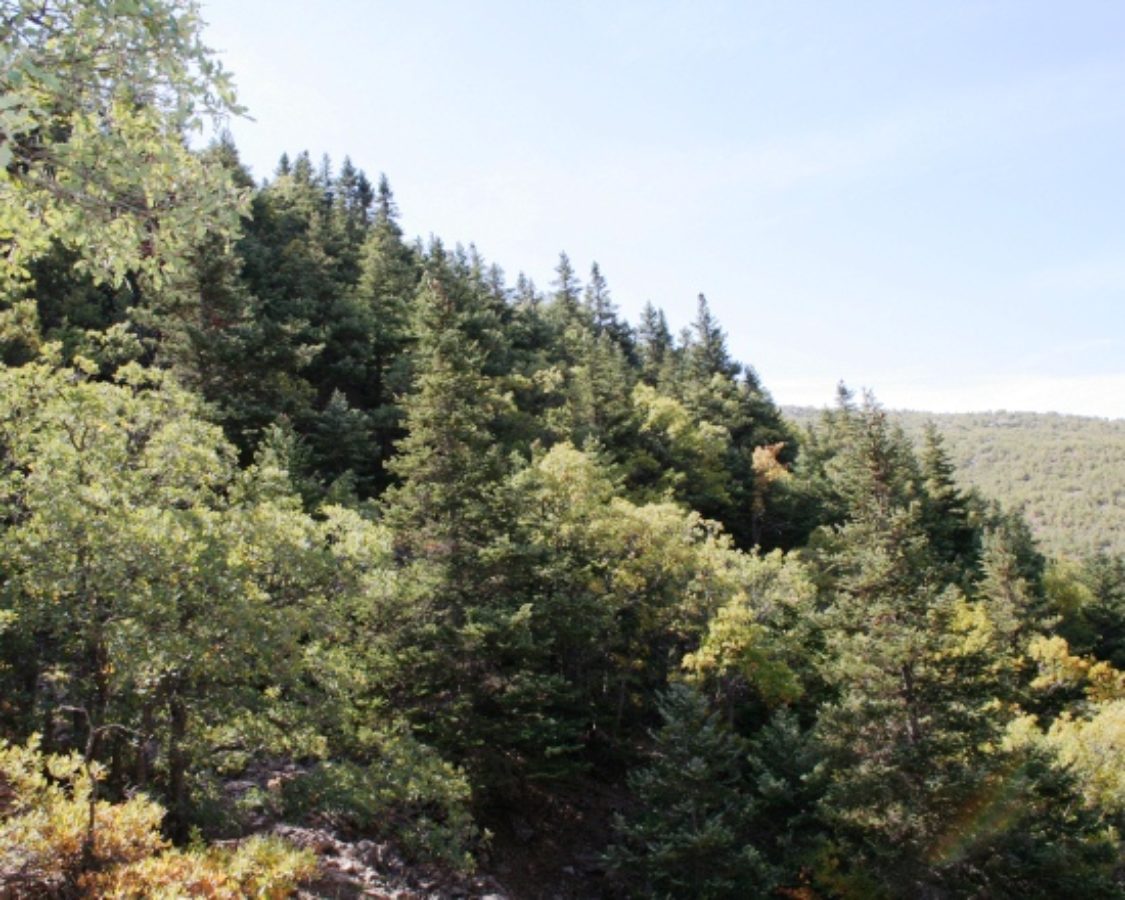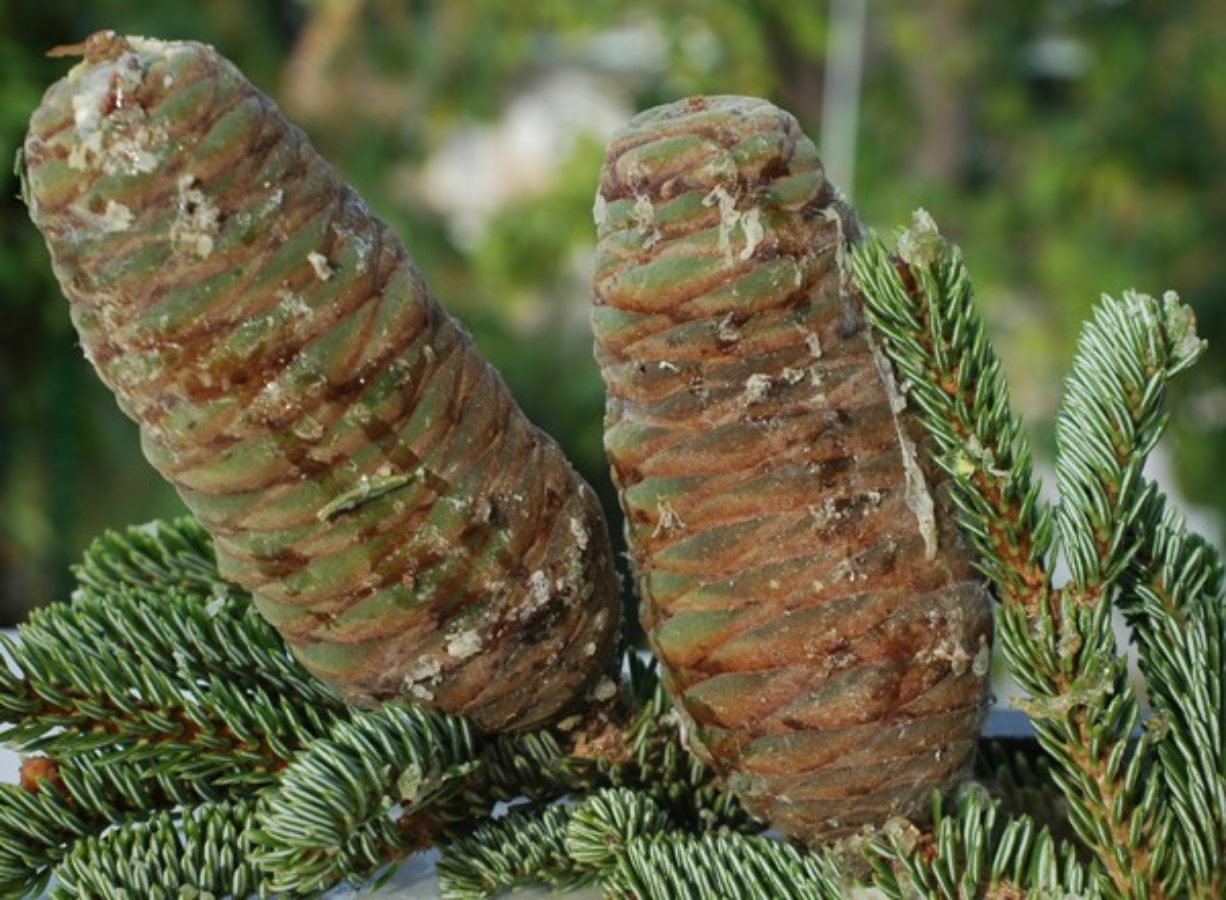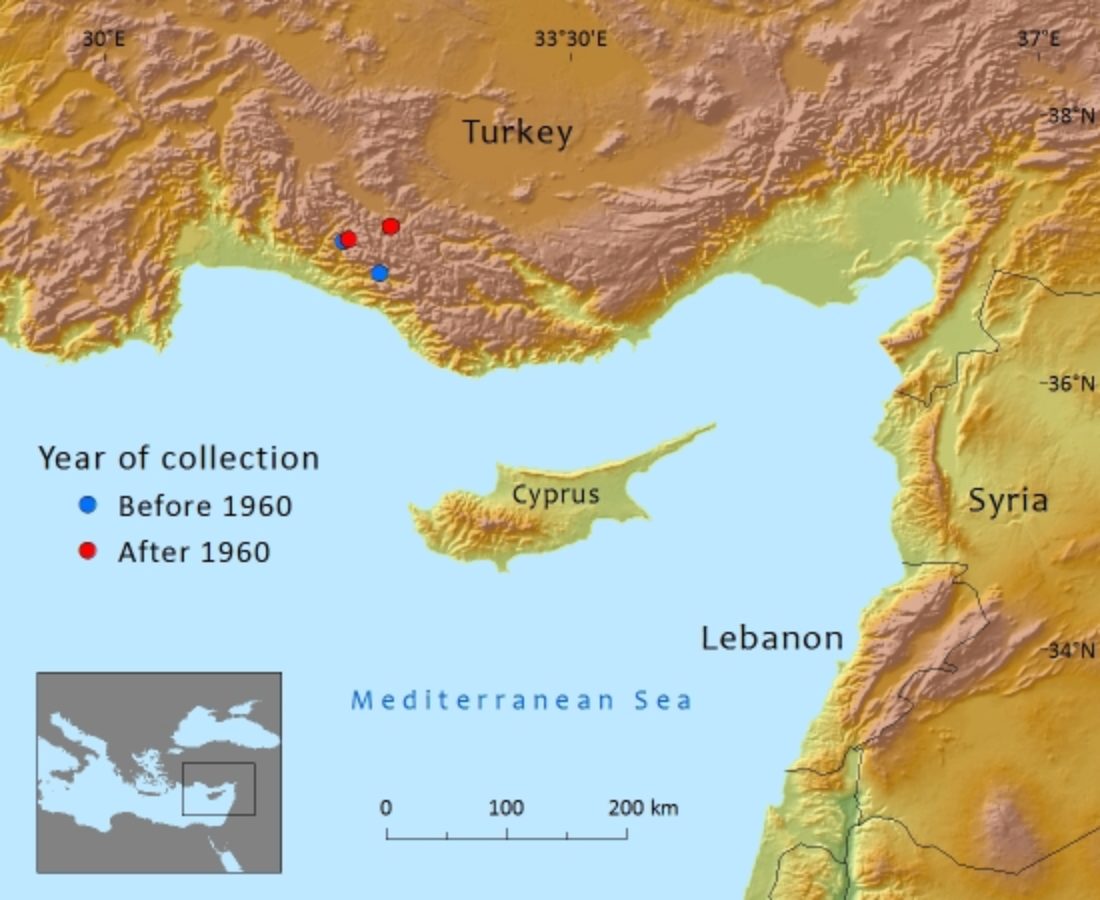Pinaceae
Abies cilicica subsp. isaurica
One of five species of firs native to Turkey where it has a restricted distribution in the Taurus Mountains. It is threatened by habitat degradation due to the effects of climate change, pathogen attack and fire.
Description
Habit
Tree to 30m tall, d.b.h. upto 1m; crown narrowly conical. Bark in old trees scaly and fissured. Branches spreading horizontally, the upper ascending, young shoots glabrous. Vegetative buds ovoid conical, acute, 3–4 x 2–3mm, resinous.
Foliage
Leaves spirally arranged, forward pointing, parted below the shoot, 25–40 x 1.5–1.8mm, twisted and abruptly narrowed at base, linear, flattened, bright green or glaucous above, greenish white with green midrib below; apex obtuse or slightly notched. Stomata in two broad bands below.
Cones
Male pollen-cones lateral, axillary, 1–1.5cm long, yellowish with red microsporophylls. Female seed-cones lateral, erect, cylindrical, 16–20 x 4–6cm, greenish when immature, reddish brown and brown when mature, often resinous. Seed scales included (rarely exserted). Seeds obovate -triangular, 10–12 x 5mm, light brown; seed wings cuneate, light brown.
Key characters
The resinous vegetative buds and the glabrous young shoots distinguish this from A. cilicica subsp. cilicica. These minor and sometimes variable differences have led some to believe that these two taxa belong to the same species.
References and further reading
- Atalay, I. & Efe R. (2010). Structural and distributional evaluation of forest ecosystems in Turkey. Journal of Environmental Biology. 31: 61-70.
- Bozkus, F. (1988). The Natural Distribution and Silvicultural Characteristics of Abies cilicica Carr. in Turkey. PhD Thesis. Istanbul University..
- Browicz, K. (1982). Chorology of trees and shrubs in south-west Asia and adjacent regions. Polish Scientific Publishers, Warsawa.
- Carus, S. (2010). Pre-growth mortality of Abies cilicica trees and mortality models performance. Journal of Environmental Biology. 31: 363-368.
- Davis, P.H., Cullen, J. Coode, M.J.E. & Hedge I. C. (1965). Materials for the Flora of Turkey: X. Notes from the Royal Botanic Garden Edinburgh 26(2): 165-167.
- Davis, P.H. (ed). (1965-1985). Flora of Turkey and the East Aegean Islands. Edinburgh University Press, Edinburgh.
- Efe, R. (2005). Land Degradation in Taurus Mountains (Southern Turkey). European Geosciences Union, 2nd General Assembly, EGU-Geophysical Research Abstracts. 7:(00922).
- Gardner, M. & Knees, S. (2013). Abies cilicica ssp. isaurica. In: IUCN 2013. IUCN Red List of Threatened Species. Version 2013.1. . Downloaded on 07 July 2013.
- Ozturk, M., A. Celik, C. Yarci, A. Aksoy & Feoli, E. (2002). An overview of plant diversity, land use and degradation in the Mediterranean region of Turkey. Environmental Management and Health. 13(5) 442-449.
- Ozturk, M., Gucel, S., Kucuk, M. and Sakcali, S. (2010). Forest diversity, climate change and forest fires in the Mediterranean region of Turkey. Journal of Environmental Biology 31: 1-9.







